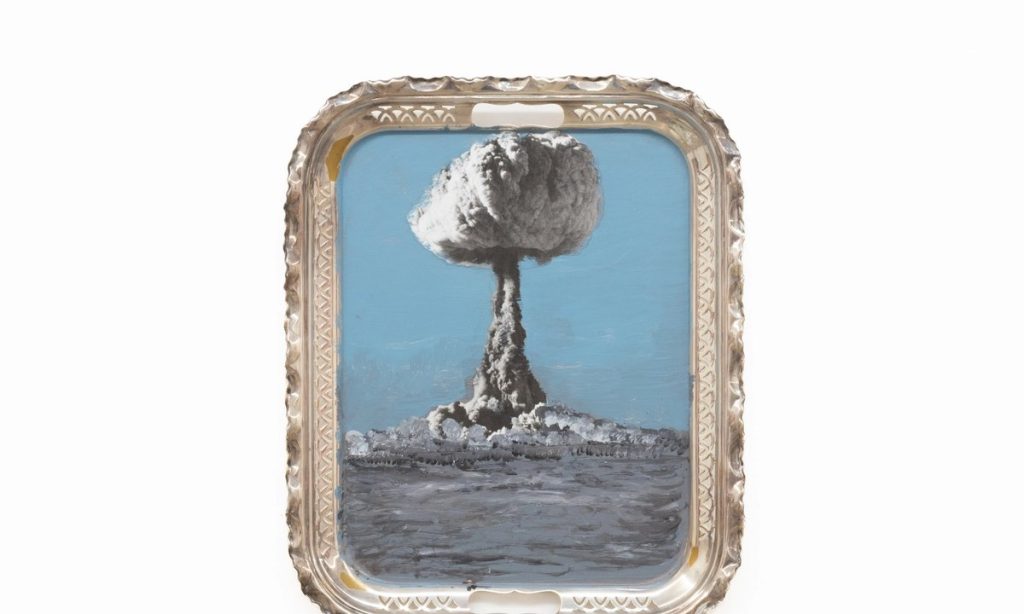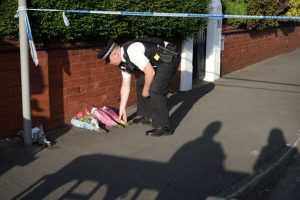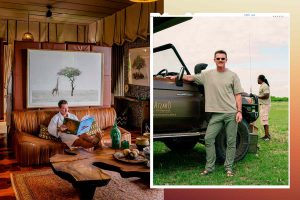The mushroom clouds that reared over the South Australian desert during British nuclear testing in the 1950s will gather again at the Melbourne Art Fair (20-23 February).
A new series of works by the Indigenous artist Harriette Bryant revives the shameful era when the Australian prime minister Robert Menzies handed over vast swathes of traditional Indigenous land for British test blasting.
There were 12 massive nuclear blasts between 1952 and 1957 at Maralinga and Emu Field in South Australia and in the Monte Bello Islands of the West Australian coast, as well as hundreds of smaller tests.
Following years of secrecy about the British tests, a Royal Commission in Australia finally condemned almost every aspect of the way the tests were conducted.
In the commission’s 1985 report, Chair Justice James McClelland attacked the woefully inadequate attempts that had been made to locate Indigenous people in the 100,000 sq. km area of South Australia that was about to be directly affected by the blasts.
Justice McClelland also found that Indigenous people had continued to live traditional lives within the South Australian contamination zones after the explosions.
In one infamous case, a family had even been discovered living in a blast crater. The mother of that group would later report adverse health effects including miscarriages.
The Royal Commission stopped short of specific findings as to the precise effect of the nuclear tests on individuals’ health. However, it did find that it was “probable” that the British testing caused cancers in the Australian population because of widespread nuclear fallout.
It found there was no reason to disbelieve Indigenous oral history that a “black mist” had followed the blasts and settled on Indigenous communities.
The Royal Commission did not go as far as the catalogue for the exhibition Black Mist Burnt Country, which toured Australia (including to the National Museum of Australia, Canberra) from 2016 to 2019, and in whose catalogue the academic Elizabeth Tynan wrote that the black mist “killed or sickened many”.
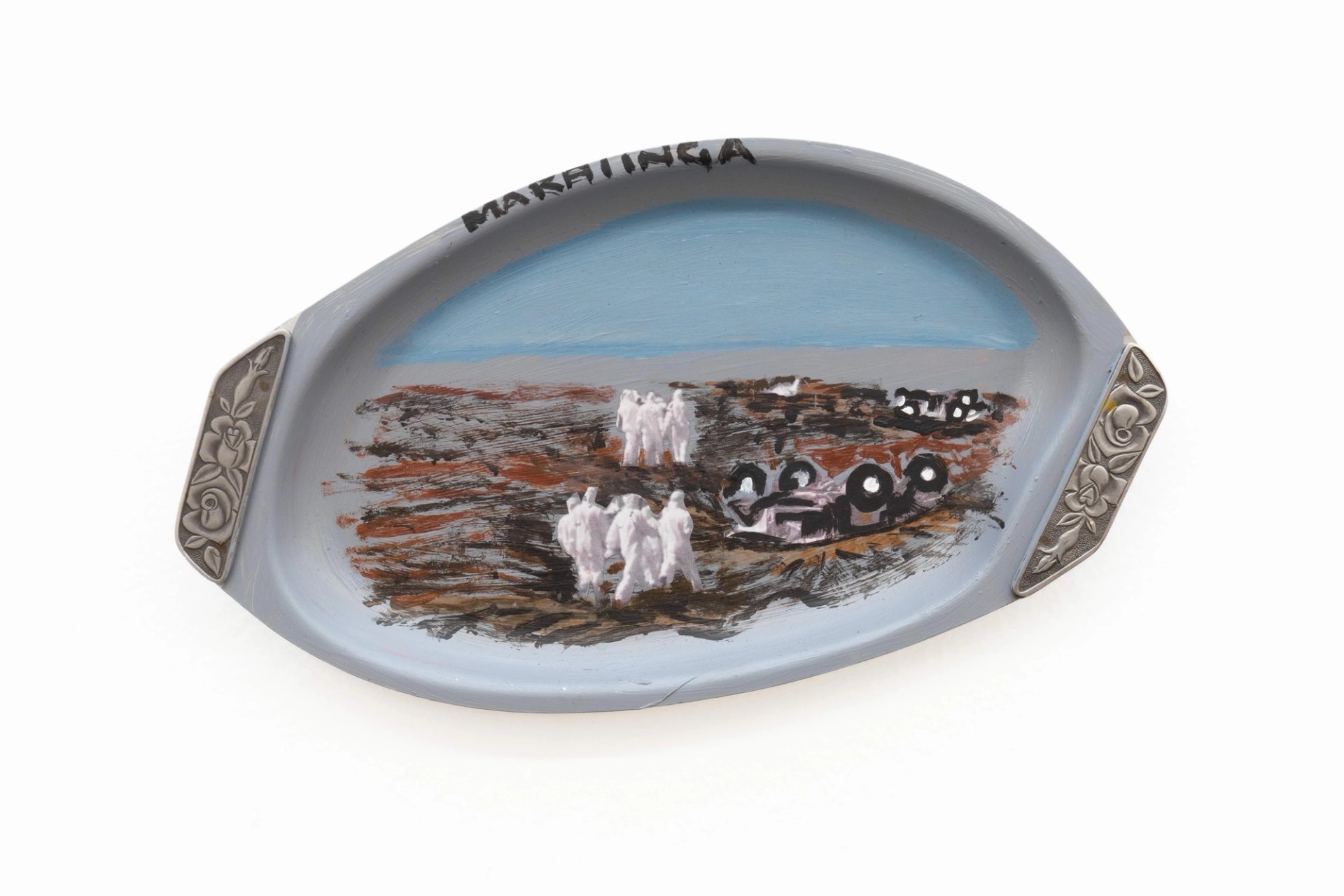
Harriette Bryant, Clean Up (2024)
Indigenous stories and memories about the British nuclear tests in Australia have been told and retold, and have now informed Harriette Bryant’s series of paintings and collage on second-hand serving platters.
Bryant was born at Amata in South Australia in 1969. She now lives in the 300-person settlement of Mimili, South Australia. She works at the Mimili Maku arts centre and is represented by Ames Yavuz gallery of Sydney and Singapore.
Bryant’s 24 plates and platters include one titled Blow Up (I am ready) (2024).
“This is the main one, the bomb blowing up at Maralinga,” Bryant says in an artist statement accompanying this work.
“A long time ago Anangu were walking by foot from, probably Ernabella, walking to Maralinga. Those early days people, they were on the other side, out west. And then the whitefellas detonated the bomb. And that bomb blew up and shook everything. Anangu thought that perhaps they had caused the bomb, but no, it was whitefellas who did it. They travelled on, kept walking, but then soldiers from the army put them in the back of Toyotas and took them to Ooldea or Yalata. They talked to people via the radio and they sung a song. They sung ‘I am ready’, that Christian song, they’d learned when they were at Ernabella. They sung that song.”
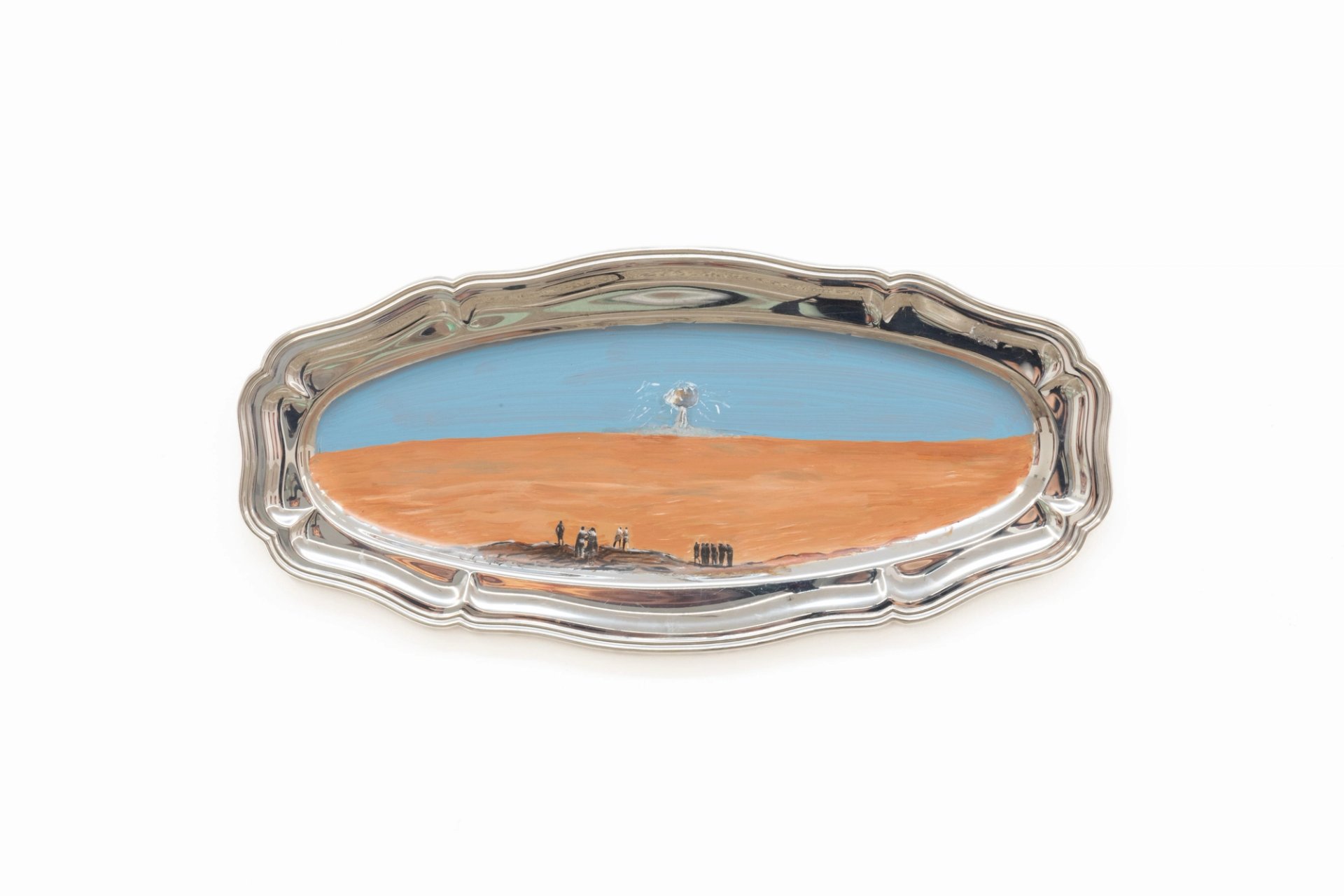
Harriette Bryant, Whitefellas watching the bomb (2024)
Another work in the series is titled Whitefellas watching the bomb (2024).
“They were watching from far away,” Bryant’s statement for the work reads. “They were just looking on, looking at it make that big mess, taking photos, making videos. They were proud of the big bomb they made, of that big mess.”
Another work in the series, titled Clean Up (2024), depicts “cleaning up the poison”.
“After the bomb all the whitefellas put on them moon suits, and come in to clean up the poison,” Bryant’s statement reads.
“It’s still there though, it sits in the earth for the longest time, maybe forever. You can’t drink the water or hunt out there now, you aren’t allowed to eat any of them bush foods. It’s all poison now.”
The Melbourne Art Fair will be held at the Melbourne Convention and Exhibition Centre. It will feature work by more than 100 artists from 70 galleries.
